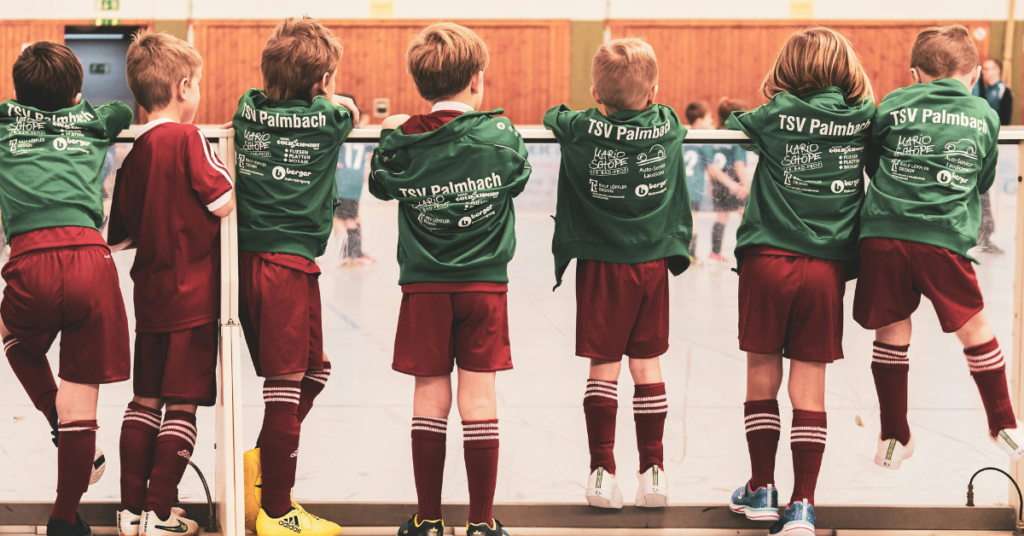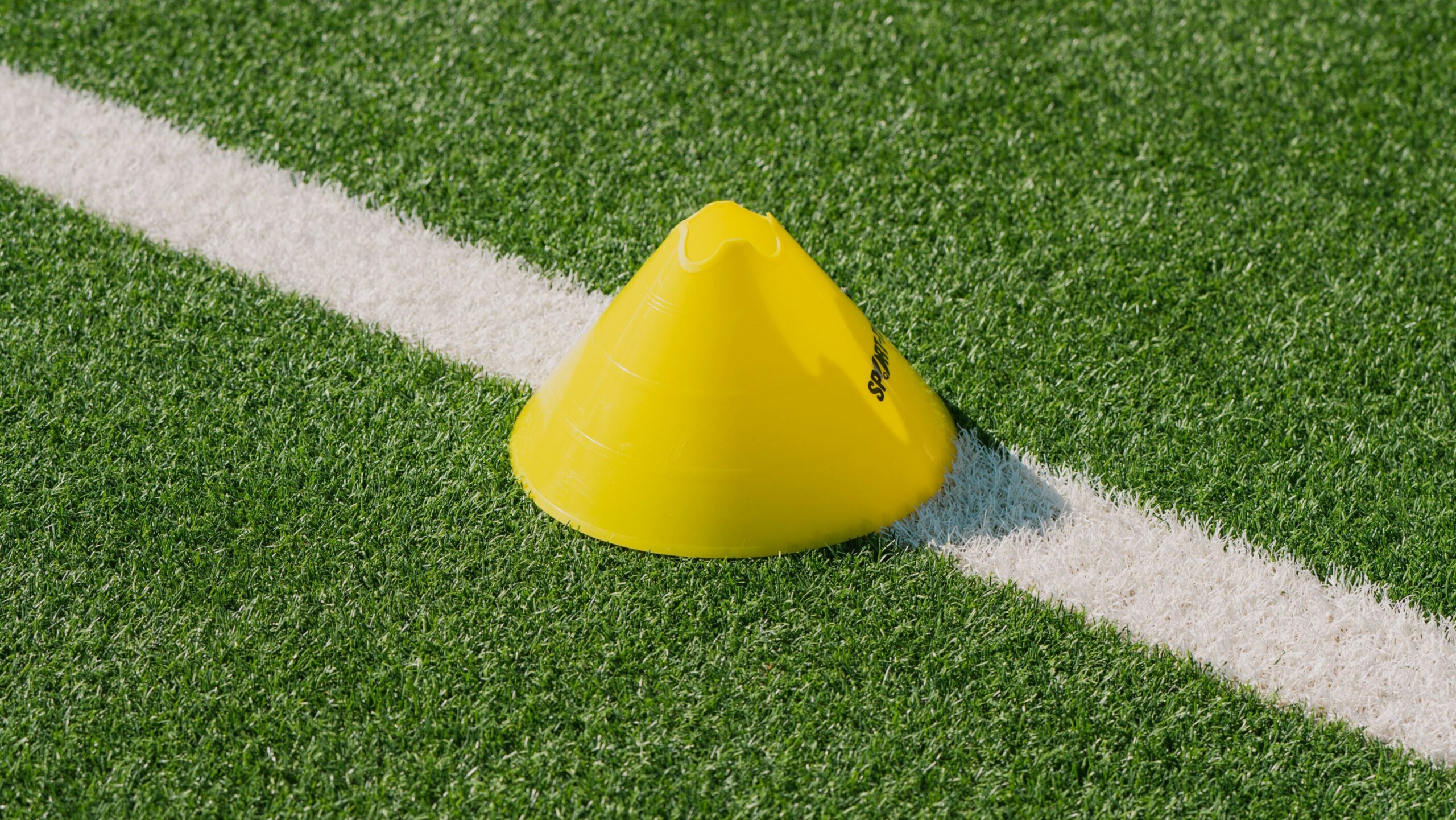Sports offer kids benefits beyond just physical fitness – they build teamwork, discipline, and self-confidence-not to mention the academic benefits of sports. I could go on an on about why kids should play sports. As youth sports parents, we have to understand that sports can be an essential part in developing our kids as they grow and mature. But choosing the right sport for your child can be tricky. Every child is unique, and it’s important to match a sport to their personality, interests, and physical abilities. Whether they’re a budding basketball shooter or a beginning soccer player, understanding their needs will guide you toward the best fit. The key is to explore options that help your child thrive, enjoying both the fun and the challenge of the sport that suits them best.

What is the best way to assess your child’s developmental stage?
If you’re like me, the moment your child came out of the womb you already dreaming up their basketball or baseball career but for a few years, they’re totally unable to play sports and they really won’t care much about them. When introducing your child to sports, understanding their developmental stage ensures they have a positive and enjoyable experience. Children grow at different rates, so it’s essential to choose activities that align with their physical, emotional, and cognitive abilities. By considering these factors, you can help them build confidence, skills, and a love for movement that will set the foundation for future success.
Developmental Stage
Younger children, especially in the toddler to preschool age range, thrive in environments where they can explore movement through free play soccer, gymnastics, swimming, T-ball, and dance are great places to start. These activities help develop basic motor skills. As they grow, they can engage in activities requiring more balance and coordination. With our kids, in their toddler stage, we’ve focused on baseball and basketball with my son and dance for my daughter while also, teaching them both to get comfortable in water and learn to swim.
Age Considerations
Around ages 6 to 9, children may show readiness for structured sports. Look into options like soccer, basketball, T-ball, gymnastics, tennis, and other where teamwork starts to play a role but the focus remains on fun. Sports at this stage should prioritize joy over competition while helping kids build confidence and develop basic skills.
Organized Sports Readiness
By age 10 and older, kids may be ready for more structured sports and competition. They can better understand rules, develop teamwork skills, and practice strategies. Sports at this age can gradually introduce higher goal-setting and self-discipline. At this stage, unique physical attributes, like height or coordination, may start to influence sports choices. Some children may show an aptitude for certain sports based on these factors, but it’s important not to push them too early. Allowing them to explore different sports ensures they find one they truly enjoy.
Gradual Progression
A phased approach is best. Start with non-competitive environments, gradually progressing as they gain skills and interest. This ensures they aren’t overwhelmed and can enjoy their growth while building resilience and a love for sports.
Signs of Readiness
Watch for enthusiasm, willingness to practice, and improved focus during activities. If your child asks about specific sports or shows a preference, it may be time to explore those options. Readiness also involves emotional maturity and the ability to handle wins and losses. I’m a huge advocate for taking your kids to high school, college, and pro sporting events so that they can get a glimpse of what hard-work and dedication can turn into. There’s nothing more inspiring for a little leaguer to watch the big leagues.

How can you align sports with your child’s personality and interests?
Every child is unique, with different temperaments and preferences. Some kids love the energy of team sports, while others prefer individual activities. Recognizing these traits can help match them to a sport they’ll enjoy. Though I’m a huge baseball fan now, when I was younger, I couldn’t take the pressure of letting my team down while playing baseball and it often made my time playing baseball unenjoyable. Personality and interests matter and they mold and shift over time. In fact, youth sports play a huge role of the development of an individual.
Team vs. Individual Sports
Team sports like football or basketball are great for kids who enjoy group activities and camaraderie. They encourage communication, teamwork, and shared goals. On the other hand, sports like tennis, golf, or swimming may appeal to kids who prefer one-on-one challenges or personal mastery. These activities allow for independent practice and self-reflection.
Introverted or Extroverted?
On the flip side, sports like tennis, golf, or swimming might appeal to kids who prefer one-on-one challenges or enjoy personal mastery. These activities allow for more independent practice and self-reflection, offering a way for introverted children to shine without the pressure of constant social interaction. While these sports can still involve some level of competition, they are less focused on group dynamics, making them ideal for kids who may prefer solitude or a more introspective approach to their physical activities.

Non-Competitive Sports
Some kids thrive in non-competitive environments. Spots like rock climbing, biking, dance, and martial arts focus on movement and personal growth rather than winning. These activities offer a creative outlet and encourage discipline without the pressure of competition. The truth is, some kids don’t prefer to chase the glory of winning, instead they can have different motivations more related to their own personal goals.
Exploring New Activities
Encouraging a try-it-all mentality allows kids to discover new interests. Letting them experiment with different sports can help them build confidence and find what truly excites them. This variety also helps them develop a range of physical skills, improving coordination, strength, and overall athleticism.
Long-Term Interests
Curiosity leads to discovery. Exposing kids to various sports helps them develop a lifelong appreciation for movement and teaches valuable lessons about perseverance and adaptability. As they grow, these experiences can shape their passions, guiding them toward activities they genuinely enjoy and want to pursue long-term.
How do you evaluate your child’s physical abilities and skills?
Every child develops differently, and while natural abilities can play a role in sports choices, interest and enjoyment are just as important. The focus should be on growth and confidence-building rather than immediate skill levels.

Energy Levels
For high-energy kids, sports like soccer or track allow for continuous movement. Martial arts and dance also provide structured ways to channel their enthusiasm. It’s important to find a sport that aligns with their natural energy to keep them engaged.
Strength and Coordination
Children with strong coordination may enjoy gymnastics, swimming, or rock climbing. These sports enhance balance, flexibility, and endurance. These activities also teach kids how to control their body in space, building confidence in physical challenges.
Hand-Eye Coordination
Tennis, baseball, and archery are great for kids who enjoy precision and timing-based activities. Developing these skills early can benefit them in multiple sports. Regular practice with hand-eye coordination exercises can sharpen reaction times and focus.
Height Considerations
While tall children may be drawn to basketball or volleyball, many other sports can accommodate their strengths. Track and field, rowing, or soccer can also benefit from extra height. Taller athletes often have a natural advantage in endurance and long-range activities. likewise, there are some sports that are more suited for shorter players. I’ve always been short, so a sport like baseball as a great place for me to not be limited by my physical height.
Encouraging Skill Development
No kid is born entirely with talent, there will always be room for skill development. Rather than focusing on natural talent, encourage skill-building through practice and play. With time and effort, kids can improve in any sport they enjoy. Celebrating small victories helps foster a growth mindset and keeps them motivated. Remember, one of the reasons we have our kids in sports isn’t just so that they’re “good at something”, but so that they can learn self-discipline and hard work while also having fun.
How can parents support their child’s sports journey?
Parents play a crucial role in shaping a child’s sports experience. The goal is to create a supportive environment where kids feel encouraged to explore their interests at their own pace. The picture below is me talking to my son during one of his first ever T-ball games. He was scared and wasn’t really sure what to do the whole time, but I can’t express how proud I was of him just because he tried his best.

Encouragement Over Pressure
Praise effort and improvement rather than just wins. I don’t care if my son’s teams lose every game they ever play, but I greatly care about the effort he puts into it. When kids feel safe to explore sports without fear of disappointing their parents, they’re more likely to enjoy the experience. This positive reinforcement helps build their self-esteem and motivates them to keep learning. My wife and I always “debrief” our son’s games with him and ask him what he felt like he did best so that we can celebrate that with him, and then we also ask, “what is something you want to get better at” and we help him find ways to grow and improve.
Being Supportive Without Taking Over
Attend games, celebrate achievements, and provide guidance without pushing too hard. Allowing kids to take ownership of their sports journey fosters independence and confidence. Your support should empower them to make their own decisions and feel proud of their progress. It’s not worth trying to live out your old dreams through your kid, that’s going to put too much pressure on them to perform. Let them live out their own dreams and be their biggest supporter as they do.
Balancing Commitment and Flexibility
While consistency is important, it’s also okay for children to change interests. Letting them try different sports ensures they stay engaged and avoid burnout. Take it one season at a time and evaluate what’s working and what’s not. Flexibility allows them to discover what they truly enjoy without feeling stuck in one activity.
Open Discussions
Check in regularly about their experience. If they express frustration or disinterest, it may be time to adjust their activities or explore new options. These conversations can guide you in offering the right balance of challenge and enjoyment. Sometimes our kids just need their mom or dad to come alongside them to help unlock their motivation and remind them of their goals. If there isn’t open discussion, we may end up putting our kid in a place they don’t want to be in, and at the end of that day that is not worth the time commitment and financial investment.
Relaxed Involvement
Not every child wants to compete at a high level, and that’s okay. Offering casual sports options, like recreational leagues or weekend games, allows kids to stay active without pressure. This creates a more relaxed environment where they can focus on fun and fitness. If they’re in competitive leagues, that’s great keep them there, but I encourage you to find additional outlets for them play their sport outside of that competitive league where the focus is 100% on having fun.
How should you approach the selection process for a sport?
Choosing the right sport isn’t about making a quick decision—it’s about giving kids the space to explore and grow. Interests and abilities may shift over time, so focusing on flexibility and enjoyment is key.
Exploring Options
Allow kids to sample different sports through trial programs, community leagues, or school teams. Exposure to various activities helps them discover what they truly enjoy. This variety also helps them develop a range of skills that can transfer across different sports.
Focus on Fun and Growth
Sports should build confidence and a love for movement. Keeping the experience fun and pressure-free ensures long-term engagement. By focusing on personal growth rather than competition, kids are more likely to stick with sports as they get older. When they’re young, we just want them to enjoy being outside away from screens and tablets, we can worry about competition, goal setting, and winning when they’re older.
No Rush to Choose
Children’s interests evolve, so there’s no need to push them into one sport too soon. The right choice will become clear over time as they gain experience and develop preferences. Ultimately, the best sport for your child is the one they love playing. By keeping an open mind and prioritizing enjoyment, you can help them find an activity that keeps them active, happy, and motivated.
Final Thoughts
Choosing the right sport for your child is a journey that requires patience, observation, and an open mind. By considering their unique developmental stage, personality, and interests, you can guide them toward an activity that will foster both enjoyment and growth. Remember, the focus should always be on fun and building confidence, not just competition or skill. Allow your child the freedom to explore different sports, and you may discover a passion that lasts a lifetime. So, start exploring today—whether through trial programs, community leagues, or casual games—and let your child’s sports journey unfold naturally. Keep it fun, keep it flexible, and watch them thrive.

